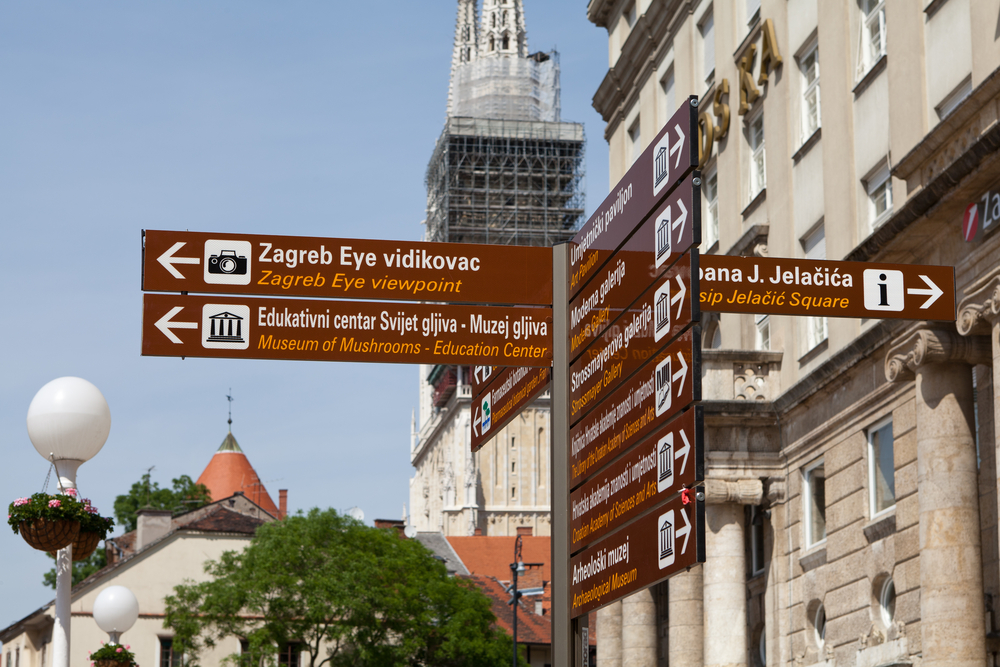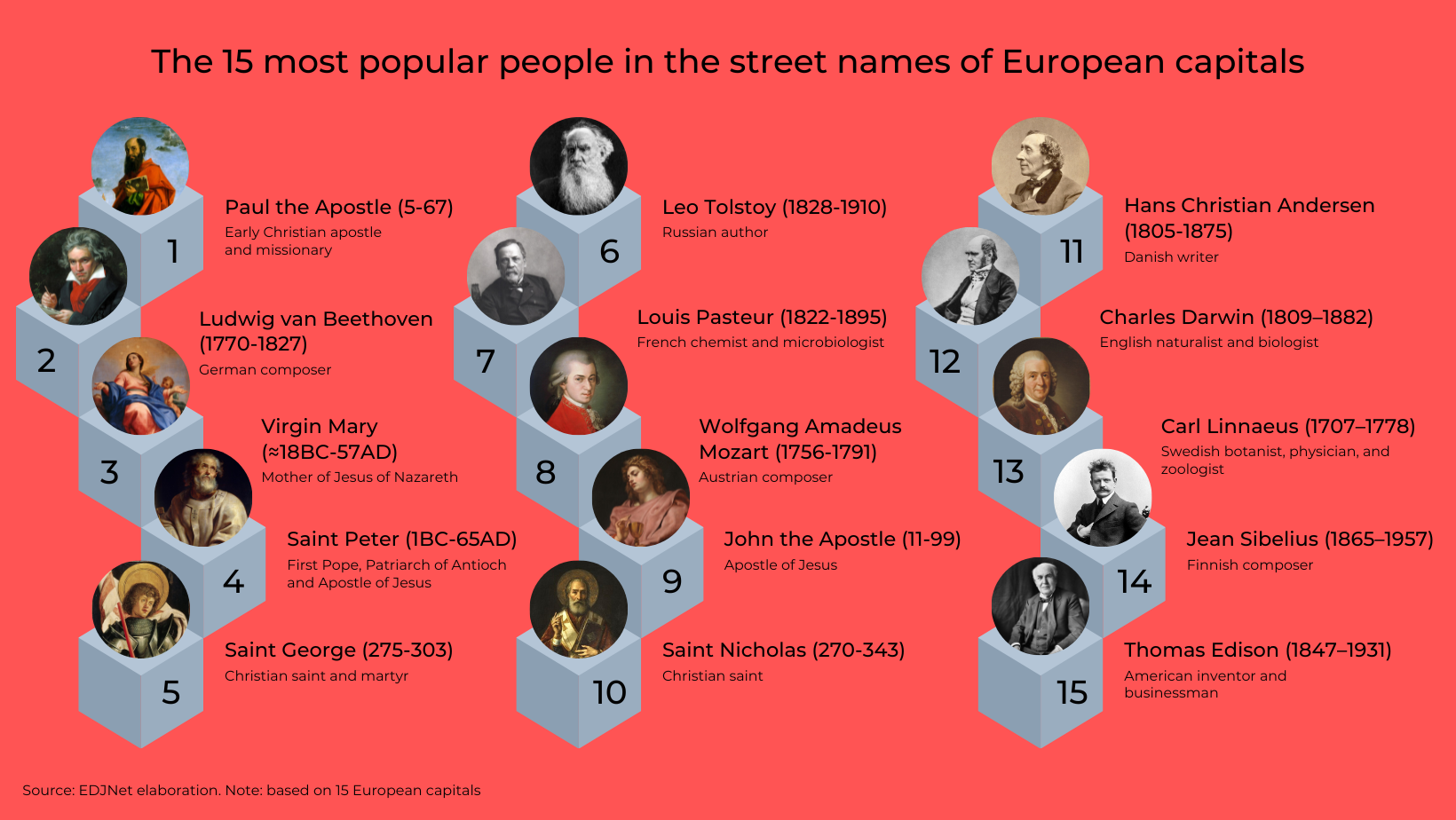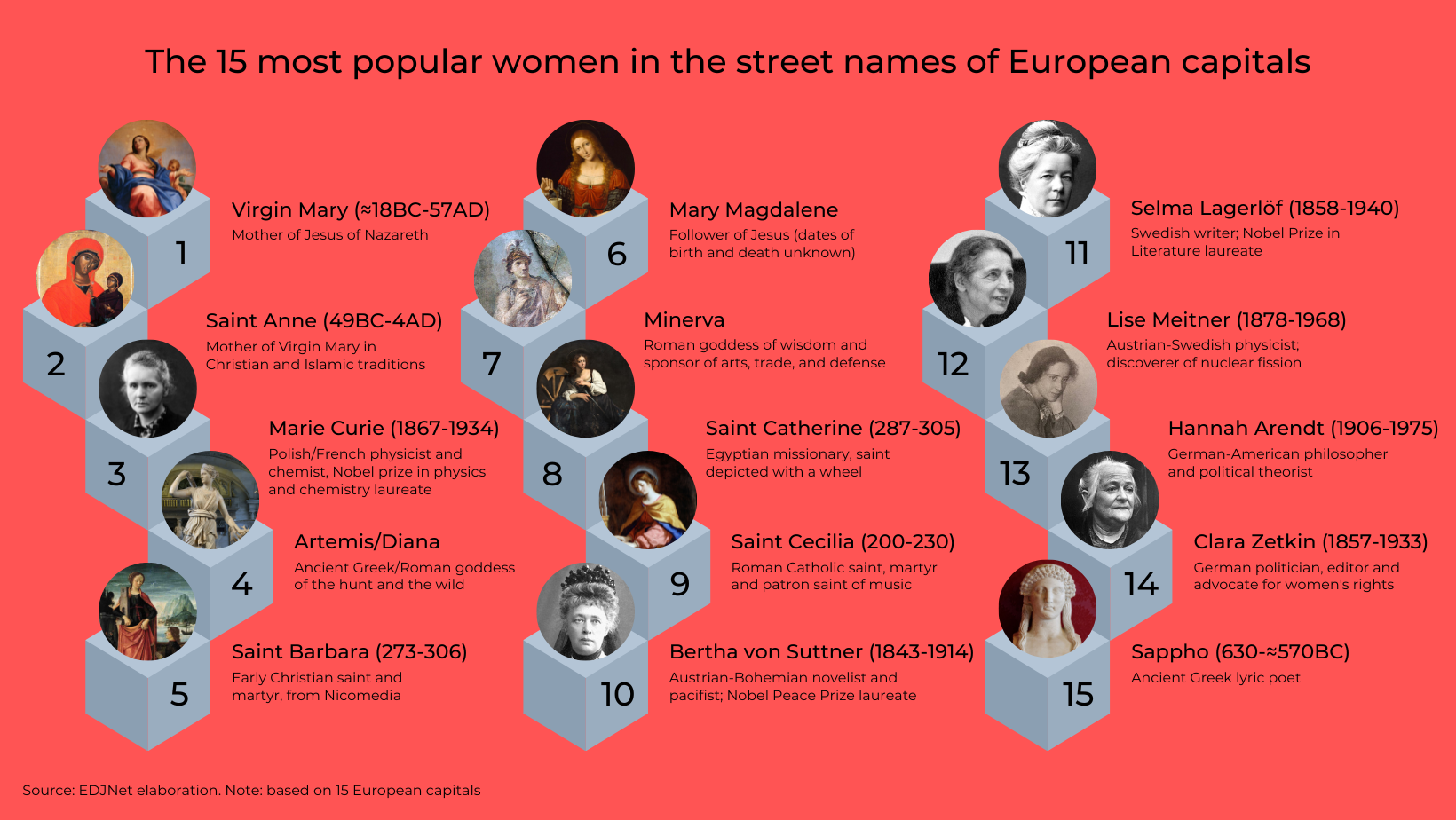Women have been erased from Zagreb’s history
Only nine percent of the streets in 30 large European cities are named after women: a sign that women's contributions to the history of cities have been not just forgotten, but erased. A municipal committee in Croatia’s capital, Zagreb, wants to change the situation, but a series of obstacles is slowing down progress.

© Gordana Sermek/Shutterstock
Only nine percent of streets in 30 large European cities are named after women, according to a large study conducted by a group of journalists from the European Data Journalism Network (EDJNet).
In their research, the journalists looked at the street names of Athens, Barcelona, Berlin, Brussels, Bucharest, Budapest, Chisinau, Copenhagen, Debrecen, Gdansk, Genoa, Katowice, Krakow, Kiev, Lisbon, Lodz, Lyon, Madrid, Milan, Palermo, Paris, Prague, Rome, Seville, Stockholm, Turin, Warsaw and Vienna, and Zagreb.
Zagreb ranks below average with only 5.6% of female street names, the same as Bucharest. The worst performer is Debrecen in Hungary, with a paltry 2.7%. The best is Stockholm with 19.5%, followed by the Spanish cities of Madrid (18.7%), Seville (17.2%) and Barcelona (15.7%).

But when you look at the women who the streets are named after, the situation turns out to be even worse. For instance, in the three Spanish cities that fare better than others, as many as 211 streets are named after the Virgin Mary.
Of the nine most honoured women by street names in 15 European capitals, only one is a “real” person, Marie Sklodowska-Curie. The rest are saints, goddesses from mythology, “unknown heroines”, and the like. It seems that, to be worthy of remembrance, women are best advised to be martyrs.
H-Alter has already written about this issue. Back in 2018, Ivana Perić and Ana Kuzmanić studied the street names of Croatian cities. Of the 64 cities they analysed, in only nine were more than 5% of streets named after women. More than half of those cities, among them the country’s largest, had fewer than 2% of streets named after women. Eleven cities did not have a single street named after a woman.
“Even without research, to anyone who walks through the streets of our cities, it is obvious that the there are streets dedicated to men, that their statues or monuments adorn squares and parks, but only here and there – mostly on the outskirts – will we come across an alley or a street named after a woman. It shows the still overwhelming patriarchal dominance in the public space, and the relative invisibility of women who have achieved outstanding results in science and art – female pilots, activists, doctors and many others”, laments Višnja Ljubičić, ombudsman for gender equality.
In Zagreb, there was a shift following a recent change of government. The place-renaming committee has since been reaching for more women’s names. In October it decided to rename a promenade in Gajnice (a Zagreb neighbourhood) after Ankica Lepej [a whistleblower and campaigner]. The park in Sopot will be named after the architect and art critic Antoaneta Pasinović. The council of Zagreb’s Črnomerec district submitted a proposal for renaming four streets after prominent artists: actresses Božena Kraljeva and Mija Oremović, opera singer Sidonija Erdody, and writer Božena Begović. They replaced the names of men associated with the NDH regime [Independent State of Croatia, the WWII Nazi puppet state].
The president of the street-renaming committee, Rada Borić, who is also a women’s rights activist, considers the current situation “tragic” and points out that – as already seen – the Zagreb figures for “real” women are even worse than the mentioned 5.6%. According to H-Alter’s research from 2018, the figure is nearer to 1.8%.
“Streets honour those who have contributed to the history of the city. When most streets are named after men, we show that women’s contributions are not counted, that they are forgotten and indeed erased from history. We want to change that,” says Borić.

Unfortunately, a series of administrative obstacles is slowing down progress. One hurdle is that most of the streets and places already have names. Renaming them can be complicated – for example, the citizens living in those streets have to change all their documents. That is not always popular, but the Zagreb municipality has pledged to cover the costs of such document changes.
When the city was originally built from a plan, street names came from that plan. Today, however, construction happens in a disjointed manner, often without the creation of entirely new streets. According to the law, investors must obtain a house number before selling a property, so these numbers tend to be attached to existing streets. This way, an opportunity to name streets is missed.
Borić explains: “We are left mostly with promenades, walkways along city streams, and smaller green areas, which must first meet the definition of a park. Or streets that have not yet been named, so most of them are in outskirts of the city. However, even after we find a location that can be named after a woman, there are obstacles. These may relate to the purpose of the place in question, or unresolved ownership, etc. So, for example, the district councillors of Trešnjevka proposed to rename the promenade along the Vrapčak stream after architect Stanka Kovačić in der Muhlen (who designed the Braće Domany skyscraper in Srednjaci district), and the promenade along the Črnomerec stream after architect Zoja Dumengjić (who designed many healthcare facilities throughout Croatia). The proposal was accepted by the committee, but the Cadastre Office informed us that the area next to the embankment is owned by [water utility government agency] Hrvatske Vode and that the walkways cannot be named.”
“This situation with street names shows how patriarchy, gender roles, and ideas of who can be a ‘deserving citizen’ are deep-rooted. That needs to be changed. Some may object that these are just symbols, or that we cannot correct patriarchy retroactively. But gender equality must be visible in public policy, including in the naming of streets,” concludes Borić.
The ombudsman for gender equality emphasises the important role of local authorities, and says that their work should be guided by the principle of gender equality.
“I call on the competent stakeholders at the local level to take care of this,” she says.

And while the Zagreb government is respecting the principle of equal participation (members of the Committee for the Naming of Settlements, Streets and Parks are of both sexes) a simple internet search shows that some local governments have not even reached the point of appointing women to committees. In Osijek, for example, the equivalent committee has nine members, and not a single woman. The same is true of the three-member committee of Starigrad. There are certainly more such examples.
Girls in European cities continue to grow up witnessing men’s achievements immortalised in the names of public spaces, while those of women are restricted to martyrs and saints, or “unknown heroines”.
The ombudsman’s conclusion: “The key message that should be sent to girls and women is that they are visible and important and equal to boys and men. Their contribution is just as important as the contribution of their male counterparts, and they have equal opportunities to fully realise all their potential.”
Original source: https://h-alter.org/europa/izbrisane-iz-povijesti-gradova/
